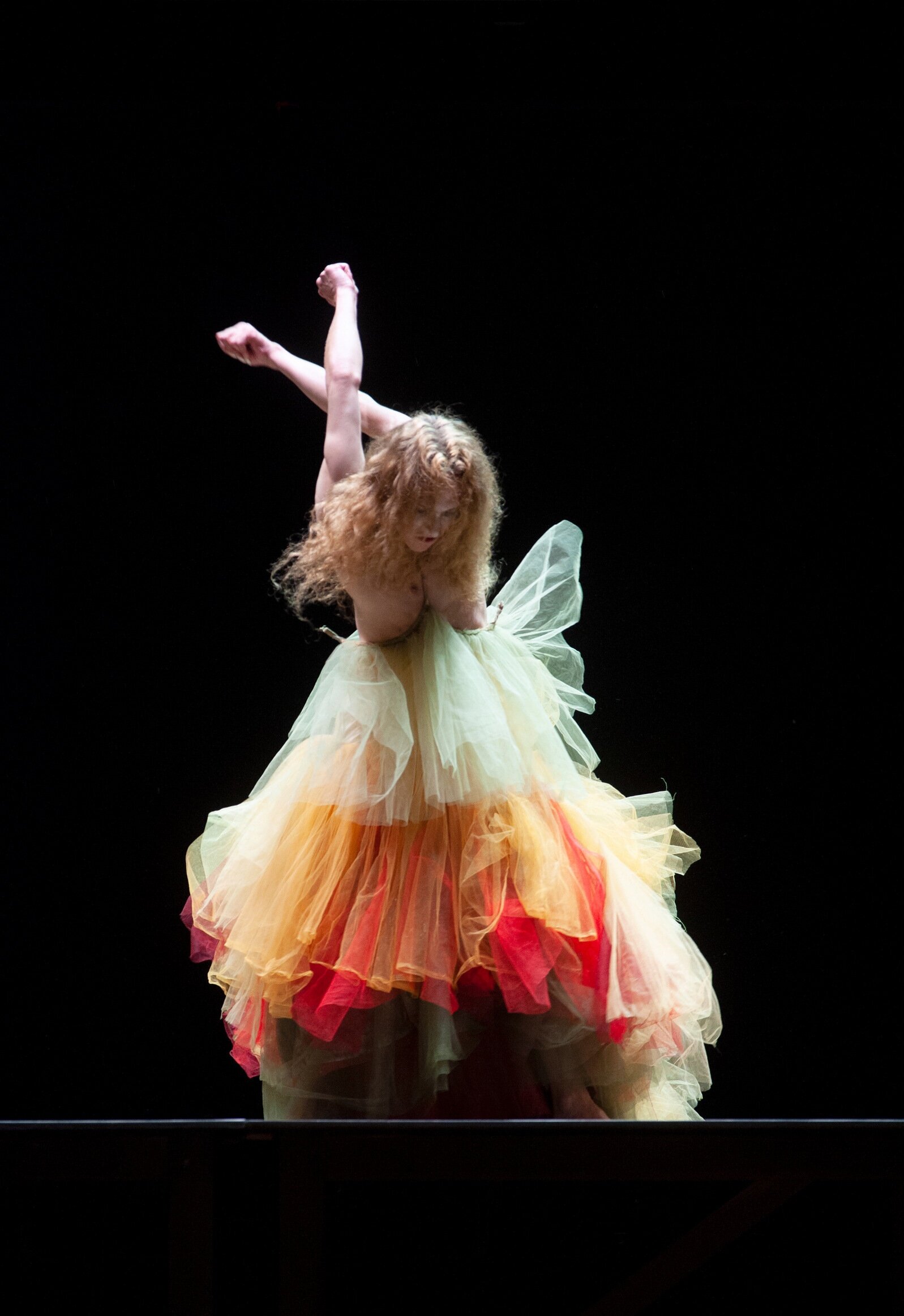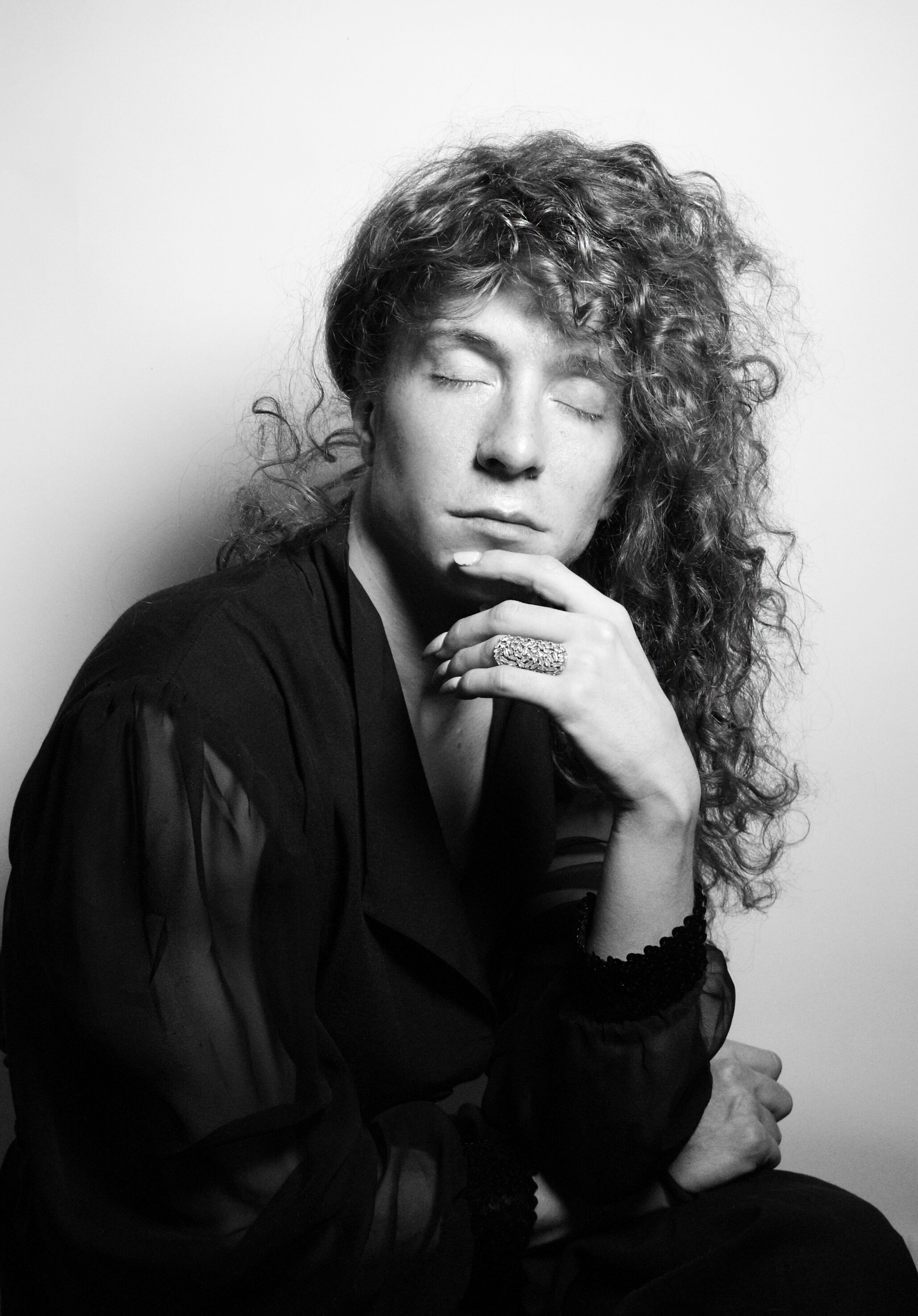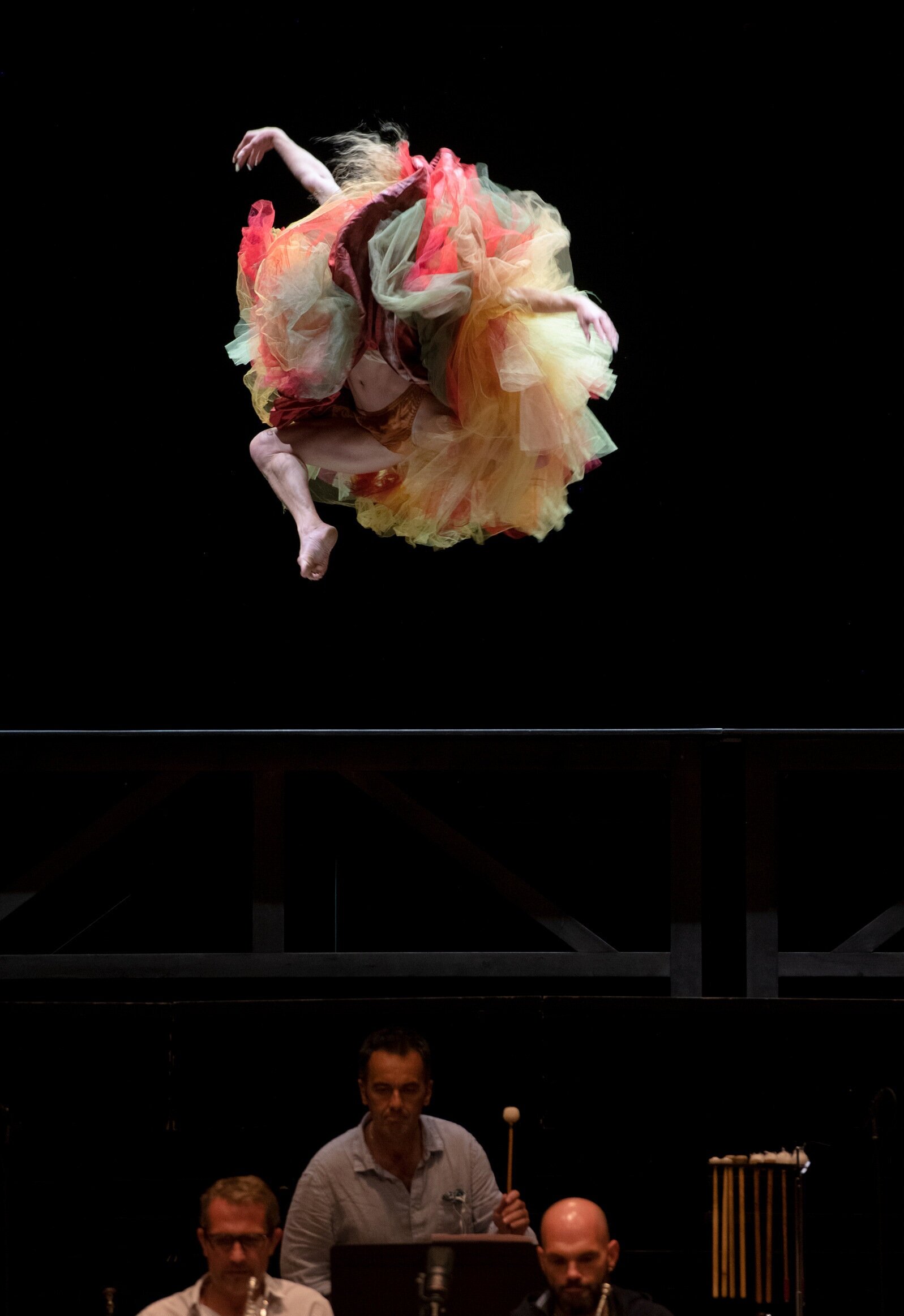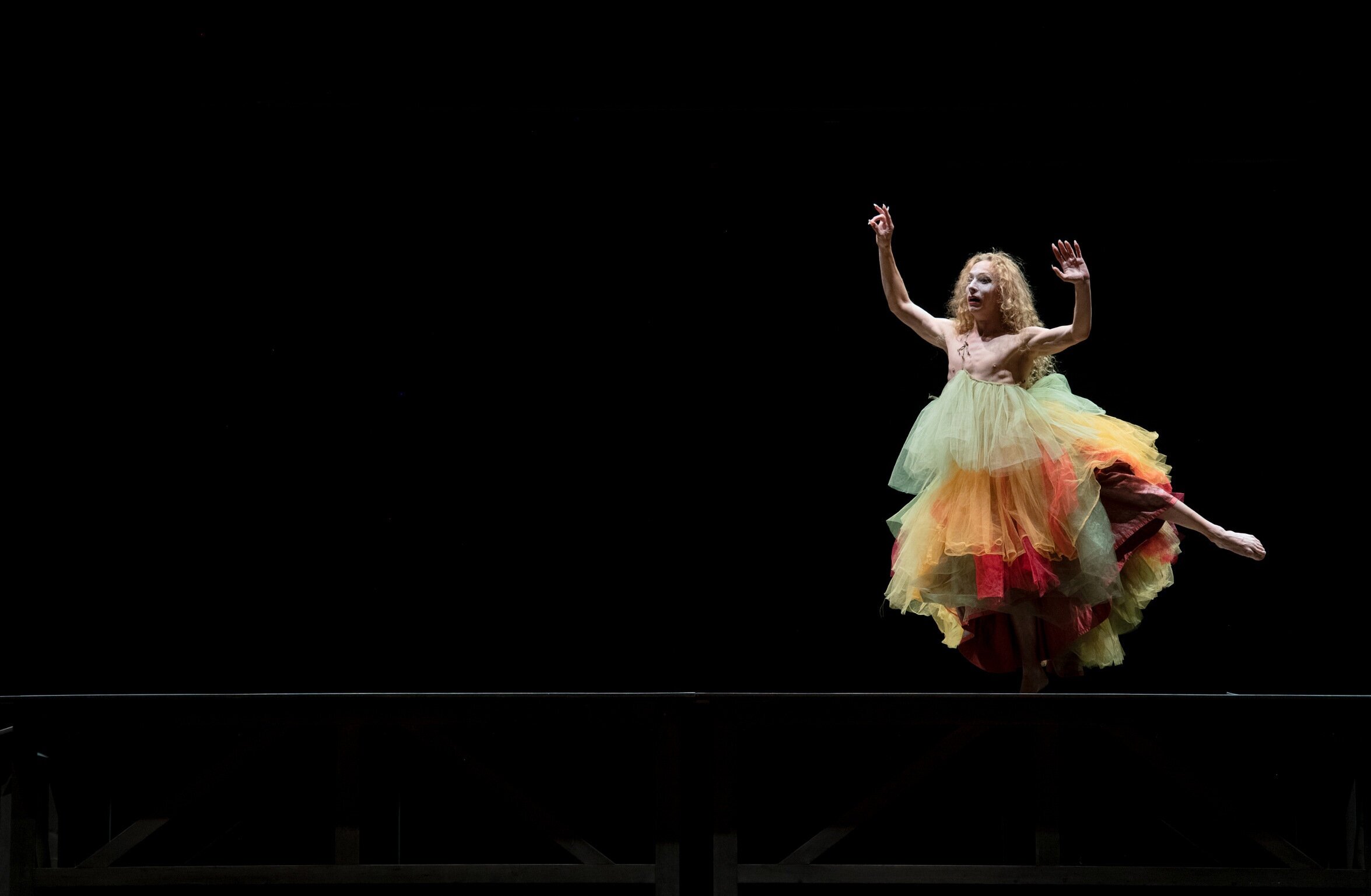CALENDAR
* Un Bolero can be found in the programs entitled Nijinska | Voilà la femme and Ballets Russes
* The solo Un Bolero is accompanied by a piano version for 4 hands of Maurice Ravel's Bolero
2024-2025
march 22nd 2025 Un Bolero piano version & Récital of François Chaignaud | Auditorium de Vincennes, in 23rd édition of Biennale du Val de Marne, by la Briqueterie - CNDC du Val de Marne march 21st 2025 - 18h & 20h Un Bolero piano version & Récital of François Chaignaud | La Manufacture - CDCN de Bordeaux, in partnership with National Opéra of Bordeaux march 15th 2025 Un Bolero piano version & Récital of François Chaignaud | Le Quai - CNDC d’Angers in Conversations Festival february 6 2025 Un Bolero piano version & Récital of François Chaignaud | Pavillon noir, Aix en Provence
2023-2024
January 10th 2024 Un Bolero | Silencio des prés, Paris
2022-2023
march 20th 2023 Un Bolero piano version | Librairie 7L, Paris november 11th & 12th 2022 Un Bolero piano version | Bonlieu Scène Nationale, Annecy
2021-2022
November 4th, 5th, 6th 2021 Un Bolero piano version | Moving in November, Helsinki
November 30th 2021 Nijinska | Voilà la femme (Les Noces & Un Bolero) | Le Grand R - Scène nationale La Roche sur Yon
December 1st, 2nd 2021 RSRB & Un Bolero | Ménagerie de Verre, Paris
December 4th 2021 Ballets Russes (Les Noces, Un Bolero, Sacre # 2) | Festival de Danse Cannes
December 7th and 8th 2021 Nijinska | Voilà la femme | La Comédie de Valence, Centre Dramatique National Drôme-Ardèche
January 18th 2022 Nijinska | Voilà la femme | Les Quinconces-L’Espal, Scène nationale le Mans
January 21st 2022 Nijinska | Voilà la femme | Théâtre Louis Aragon, Scène conventionnée Danse - Tremblay-en-France
January 25th and 26th 2022 Nijinska | Voilà la femme with Aedes Ensemble and Les Siècles orchestra | Les 2 Scènes - Scène nationale de Besançon
January 29th 2022 Nijinska | Voilà la femme with Aedes Ensemble and Les Siècles orchestra | Cité-musicale Metz
February 1st and 2nd 2022 Nijinska | Voilà la femme with Aedes Ensemble and Les Siècles orchestra | Le Volcan Scène nationale du Havre
February 5th 2022 Nijinska | Voilà la femme | Scène nationale du Sud Aquitain
February 8th 2022 Nijinska | Voilà la femme | Le Parvis, Scène nationale Tarbes-Pyrénées
February 11th and 12th 2022 Nijinska | Voilà la femme | Théâtre de la Cité, CDN de Toulouse April 8th and 10th 2022 Ballets Russes (Les Noces, Un Bolero, Sacre # 2) | Théâtre Jean Vilar - Scène Conventionnée de Suresnes May 19th 2022 Un Bolero piano version | La Passerelle, Scène nationale de St Brieuc
2020-2021
September 19th 2020 | public reheasal | La Briqueterie - CDCN du Val-de-Marne
September 26th and 27th 2020 | Creation Philharmonie de Paris as part of Festival d’Automne à Paris
March 23th 2021 | Création Chaillot, Théâtre National de la danse with la Biennale du Val-de-Marne | Profesionel presentation
June 4th 2021 Un Bolero piano version | Maison Folie Wazemmes, Festival Latitudes contemporaines
June 17th 2021 | Nijinska | Voilà la femme | Théâtre Paul Éluard, Bezons | public premiere
July 5th 2021 Un Bolero piano version | Musée de l’Orangerie with the Festival d’Automne à Paris
Distribution
Choreography Dominique Brun and François Chaignaud
Interpretation François Chaignaud or Massimo Fusco
Dominique Brun’s assistant Judith Gars
Historical research Dominique Brun and Sophie Jacotot
Archives photographer Ivan Chaumeille
Music Robin Melchior, transcription for choir and small ensemble of Maurice Ravel’s Bolero
Music will be performed by five musicians from orchestra Les Siècles (1 harmonium, 2 cymbalums, 2 perscussions) and a pianola and singers by Ensemble Aedes (4 soloists and choir of 17 singers)
Direction Mathieu Romano
Orchestral version performed by Les Siècles
Piano Version for four hands performed by Sandrine Le Grand and Jérôme Granjon
Costumes Romain Brau
Scenography Odile Blanchard - Atelier Devineau
Technical manager Christophe Poux
Lighting design Philippe Gladieux
Light production Alban Rouge
Sound Eric Aureau
Running time 18 minutes
CREDITS
Production Les porteurs d’ombre
Coproduction Association du 48 | Le Volcan, Scène nationale du Havre | Chaillot - Théâtre national de la Danse | Les 2 Scènes - Scène nationale de Besançon | Théâtre du Beauvaisis - Scène nationale | Le Quartz - Scène nationale de Brest | Théâtre Louis Aragon, Scène conventionnée d’intérêt national Art et Création – Danse de Tremblay-en-France | Ménagerie de Verre (Paris) | CCN Ballet de Lorraine | La Briqueterie - CDCN du Val-de-Marne | Le Grand R - Scène nationale La Roche sur Yon | Cité musicale-Metz | CCNN dans le cadre de Danse en Grande Forme | Les Quinconces-L’Espal Scène nationale du Mans | Théâtre de Suresnes Jean Vilar
With the support of Adami | Fonds de dotation du Quartz (Brest)
First performed
September 26th and 27th 2020 | La Philharmonie de Paris
Un Bolero
Bolero is a dance that first appeared in Spain in the 18th century. Today, it owes its fame and success to composer Maurice Ravel (1875-1937)’s Boléro. The score for Boléro was originally composed for a ballet. In 1928, Ravel and Nijinska found themselves involved, through their sponsor Ida Rubinstein (1885-1960), in a “Spanish ballet”. Ravel initially decided to orchestrate six movements taken from Isaac Albénizs Iberia, but doubtful that he would obtain the rights to the piece, he changed his goal and decided to create his own ‘Boléro’. The composer reluctantly committed himself to “a theme that would not last for merely one minute, but for 18” (his words). This was the idea behind Boléro. As for Nijinska, she manipulates Ravel’s libretto, by moving the action from a factory to a tavern: a dancer dances on a table under the light from a lamp, “in front of twenty men, who are all fascinated by the carnal incantation of the sole woman”. The first performance was on 22nd November 1928 at the Opéra Garnier.
Un Bolero, the piece which Dominique Brun has choreographed, with and for Francois Chaignaud, derives from and at the same time differs from this first Boléro. Whilst it borrows the ideas of dancer performing on the table and the basquine (a sort of Basque petticoat) from the 1928 choreography, it also evokes other memoires which “like to hunt in the dark”: those of Kazuo Ōno (1906-2010) and Tatsumi Hijikata (1928-86). In the 1970s both these men paid homage to another dancer living when Nijinska did: La Argentina (1885-1960). They presented the iconic image of the flamenco dancer in an incredibly new way. It was close to a “revolt of the flesh”. Wearing a long dress, the dancer turns spinning, foot staccato, slowed down arms and torso, his body resisting the martial nature of the rhythm to better thwart the music’s authority.
PRESS
"It's true, and yet the figures speak for themselves: Bronislava choreographed over seventy works, her brother only four. She places us above all in her influences and her era, and in those dissonances that have become the signature of modernity. And who better than François Chaignaud to embody the thinking and writing of this woman? And who better than François Chaignaud to embody the thought and writing of this woman, who chooses to be either a man or a woman, on stage or off. "
Amélie Blaustein Niddam - Toute La Culture - Sept. 27th, 2020
"There is no question here of reconstitution, rereading or even recreation: while the music for this Boléro remains that composed by Maurice Ravel for the diva and patron Ida Rubinstein, the same cannot be said of the dance, choreographed by Dominique Brun for the performer François Chaignaud. "
Nicolas Villodre - Mouvement - June 8th, 2021
"Going against Maurice Béjart's vision, Dominique Brun returns to the origins of Bolero, written in 1928 by Vaslav Nijinsky's sister, Bronislava Nijinska. Without seeking to resurrect the score to the letter, she revisits its heritage through Tatsumi Hijikata's butô, and via the figure of La Argentina, founder of the Ballets espagnols. On stage, dancer François Chaignaud allows himself to be crossed by these figures from the past, and enters into resistance against the authoritarian martiality of the music. "
Delphine Roche - Numéro - July 5th, 2021








